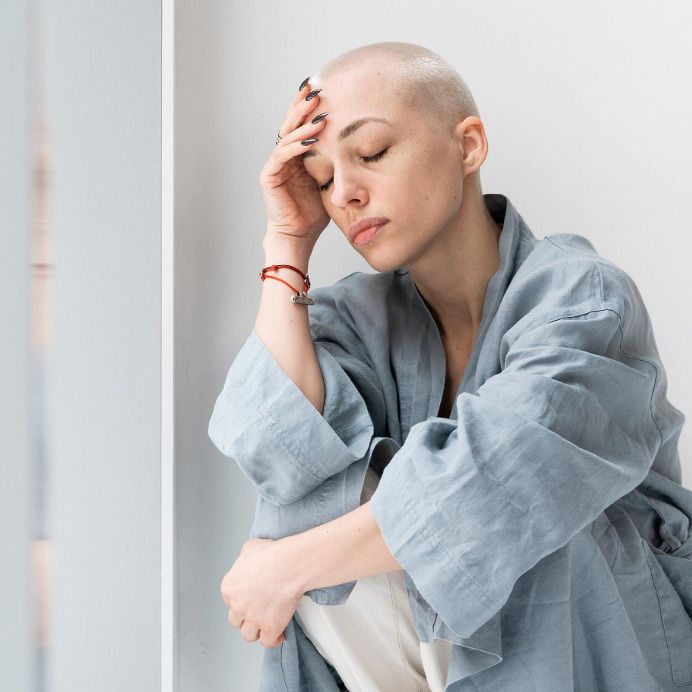 In this blog series, we present excerpts from Dr. David Stewart’s book A Short Primer on Why Cancer Still Sucks. If you would like to read Dr. Stewart’s 13 other reasons, plus what the future of cancer research might look like, copies are available through Amazon Books or at whycancerstillsucks.com.
In this blog series, we present excerpts from Dr. David Stewart’s book A Short Primer on Why Cancer Still Sucks. If you would like to read Dr. Stewart’s 13 other reasons, plus what the future of cancer research might look like, copies are available through Amazon Books or at whycancerstillsucks.com.
The fourth reason that cancer still sucks is that it can recur in some patients even if it appears to have been removed completely by surgery. Surgery is not even an option for many patients.
Patient resectability and operability: The decision about whether to offer a patient surgery is always a balancing act. The probability of success is weighed against the chances of a cancer recurring or of the surgery leaving the patient severely impaired. It is important to involve patients in this decision-making process by informing them of the risks and rewards. They need to know as much as possible to make informed decisions.
Two factors are important in deciding whether to operate. First, a cancer must be “resectable.” That means it can be completely removed by surgery without an unacceptable level of risk. Second, the individual must be “medically operable.” An inoperable patient might have high-risk major medical problems (such as bad heart disease) or might be otherwise too weak to tolerate surgery.
Here’s a simple way to understand why a cancer may not be resectable. Think of being at the beach and dropping your hamburger in the sand. You pick it up and remove all the sand you can see, but when you bite into it you inevitably hit more sand. The same thing happens if a cancer has spread widely into adjacent tissues. No matter how extensive the surgery, there will be some tumor left behind.
A potentially resectable tumor also might be considered inoperable if there is a very high probability of cancer recurrence, despite complete removal of the cancer. For example, cancers often spread through “lymphatic channels” to form metastases in local lymph nodes. The more extensive the lymph node involvement, the higher the probability that blood-born metastases eventually will appear elsewhere. Hence, even if the lymph node metastases are resectable, surgery may not be worth the risk. Typically, the larger the number of lymph nodes involved by the cancer and the further the involved nodes are from the primary tumor, the higher the risk of eventual appearance of incurable distant metastases. In this case, radiotherapy is often offered instead.
Why surgery can fail: Sometimes during surgery, cancers that initially appear to be resectable are found not to be—usually because they have invaded surrounding structures that cannot be removed. In addition, distant metastases may show up months or years after surgery. There may be millions of tumor cells circulating in the blood stream that have escaped from the primary tumor. However, in some patients, none of these cells circulating in the blood stream can establish metastases. This is the reason that some cancers may be cured by surgery despite these circulating tumor cells. However, if one circulating cancer cell can establish itself as a metastasis in a distant site, then there are probably many others that will do the same.
Assessing the risk of postoperative cancer recurrence to guide use of adjuvant therapies: Once a patient undergoes surgery, a pathologist carefully examines the resected tissue. For example, they will report microscopic evidence—if any—of the cancer extending to the surgical margins (i.e., to the very edge of the tissue that the surgeon removed). This will indicate a very high probability that there were tumor cells left behind at the time of surgery. There will be a high risk that the cancer will recur unless something more is done. The more tissue removed, the better the chance that all the cancer is gone. However, the larger the amount of normal tissue removed, the higher the risk of a major negative impact on the patient’s quality of life.
If residual tumor is found at the margins of surgery, radiotherapy might be given to the area around the original tumor to try to kill off any remaining tumor deposits in the area. In breast cancer, it is usual to do a lumpectomy for selected tumors (just removing the tumor that can be seen) without doing disfiguring extensive surgery. This limited surgery is then routinely followed by radiotherapy to deal with any local tumor(s) that may be left behind. The pathologist also assesses other characteristics associated with an increased risk for developing distant metastases. This includes information about the size of the cancer and on tumor differentiation. In a “poorly differentiated” cancer, the tumor cells look markedly different from normal cells. In a “well differentiated” cancer, the tumor cells look like normal cells. Poorly differentiated tumors are more likely to recur and behave in a highly malignant fashion.
Taken together, this information is used to establish the stage of a patient’s cancer and to make a best guess as to the probability of recurrence. After removal of a cancer, systemic adjuvant therapy may be offered to patients at moderate or high risk of recurrence to try to reduce the probability of recurrence. Systemic therapies like chemotherapy, hormone therapy, and immunotherapy are given intravenously or by mouth and are distributed through the blood stream to all parts of the body. For most cancers, these systemic therapies cannot cure patients with advanced metastatic disease. They may, however, increase cure rates after surgery or radiotherapy by killing “micrometastases” (i.e., metastases that are initially too small to show up on a scan but that would eventually grow and spread until it is incurable).
Adjuvant therapies can help for most types of cancer that are at moderate or high risk of recurrence. For most malignancies, the size of the gain with these adjuvant therapies is small (e.g., increasing long-term survival rates by 5–15). However, if the probability of cure was only 10% with surgery alone, then adding another 5% can be quite meaningful. On the other hand, if the chance of cure with surgery alone was 80%, then adding another 5% may not seem to be that major. All we know is that the therapy modestly improves their chances but comes with side effects and inconvenience.







